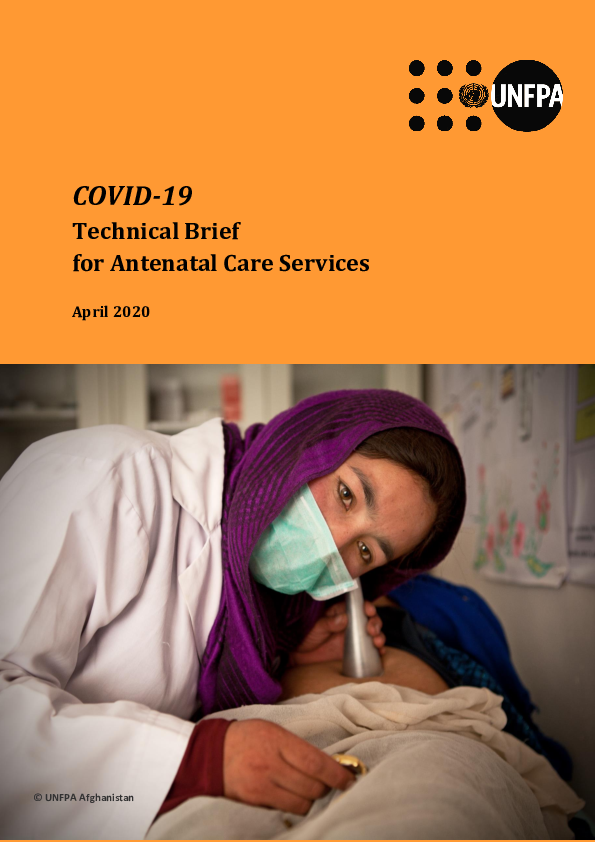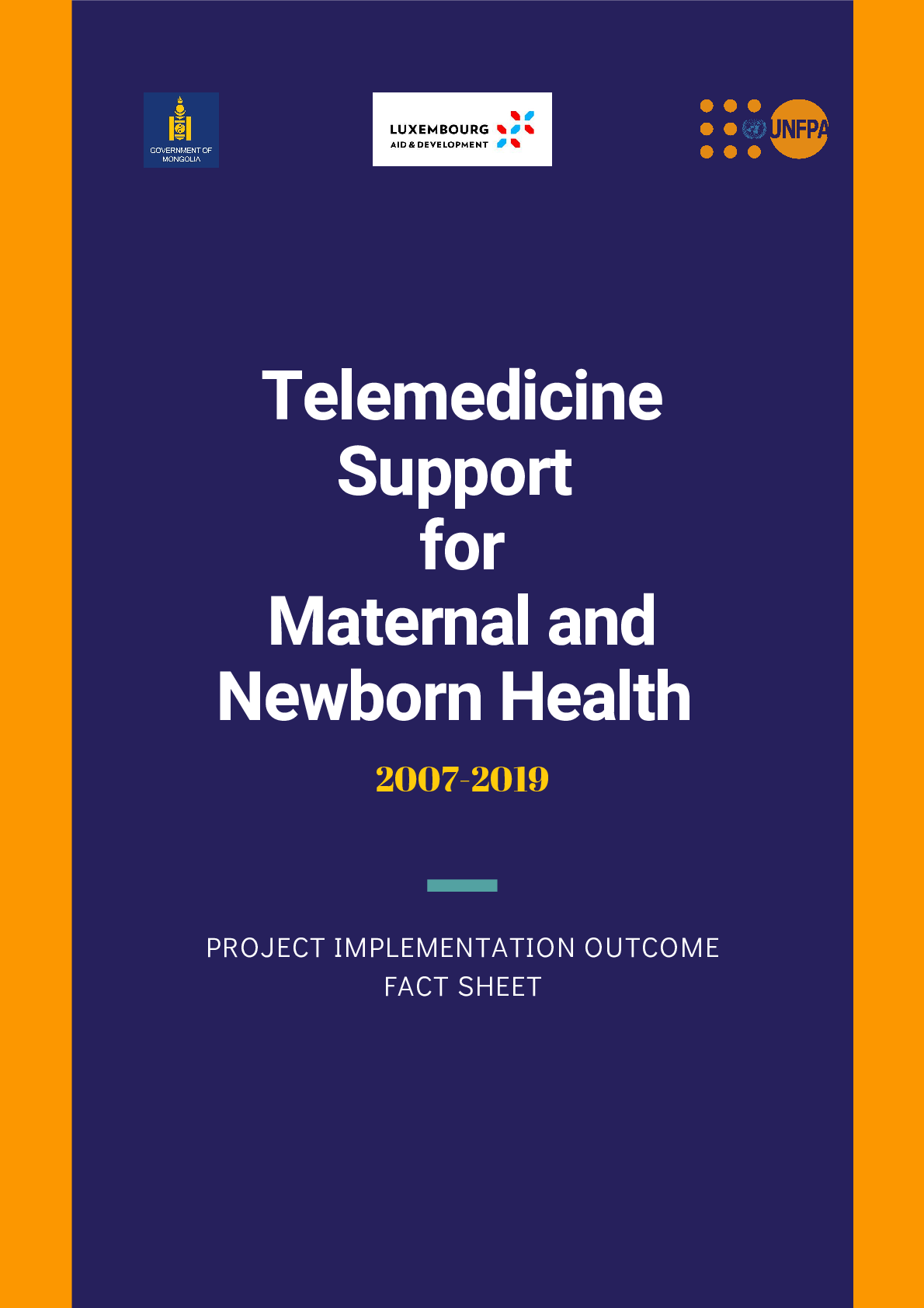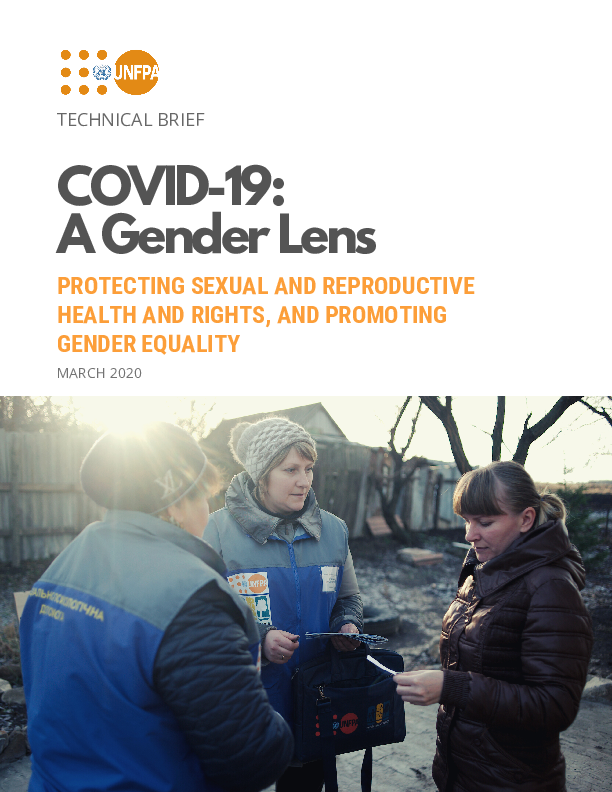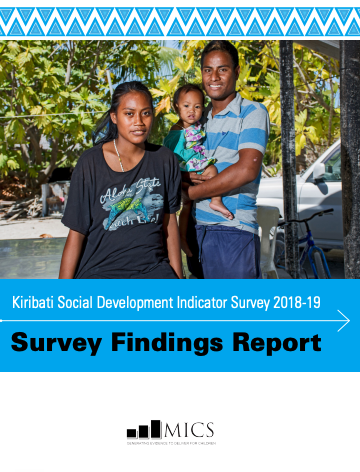You are here
New Releases

UNFPA Pakistan COVID-19 Situation Report 1
In response to the COVID-19 outbreak, UNFPA Pakistan has developed a comprehensive Strategic Response Framework, in line with the national response plan, aligned with UNFPA’s global strategy and WHO’s Operational Planning Guidelines. This is the first sit-rep from UNFPA Pakistan on the COVID-19 response.

COVID-19 Technical Brief for Antenatal Care Services
As this Technical Brief notes, studies to date do not show an increased risk of severe disease in late pregnancy or substantial risk to the newborn from COVID-19. But its impact on acute care services in settings with under-resourced health systems is likely to be substantial. The brief provides guidance on continuing to deliver a high level of antenatal care.
It serves as an adjunct to the UNFPA COVID-19 Technical Brief for Maternity Services to provide interim guidance on providing phone-based antenatal care (ANC) in the immediate clinical situation during COVID-19. These recommendations are provided as a resource based on a combination of WHO guidelines, good practice and expert advice based on the latest scientific evidence. The situation with COVID-19 is evolving rapidly and the guidance will continue to be updated if and when new evidence or information becomes available.

Telemedicine Support for Maternal and Newborn Health in Mongolia
Learn how UNFPA is helping to improve maternal and newborn health through technology innovation in Mongolia.

COVID-19 Technical Brief for Maternity Services
This Guidance Note offers a list of recommendations based on a combination of WHO guidelines, good practice and expert advice based on the latest scientific research. The situation with COVID-19 is evolving rapidly and the guidance will continue to be updated if and when new evidence or information becomes available.

UNFPA Global Response Plan for Coronavirus Disease (COVID-19) Pandemic
The UNFPA Global Response Plan (published in April 2020) is fully aligned to and part of the UN Secretary-General’s three-step plan to respond to the devastating socioeconomic impacts of COVID-19. UNFPA’s plan complements the WHO COVID-19 Strategic Preparedness and Response Plan.
At the global and regional levels, UNFPA is part of the coordinated UN response under the Inter-Agency Standing Committee (IASC) COVID-19 Global Humanitarian Response Plan.
At the country level, UNFPA works within UN country teams under the leadership of the UN Resident/Humanitarian Coordinator and designated COVID-19 Outbreak Coordinator.
Under the IASC cluster system, UNFPA leads coordination of the gender-based violence area of responsibility within the protection cluster.

Preventing Son Preference and Undervaluing of Girls in Asia Pacific
This regional brief provides an overview of the status of gender-biased sex selection in the Asia Pacific region, with a focus on the consequences of sex selection, challenges and promising practices to address son preference and gender-biased sex selection in affected countries, and recommended interventions to address this harmful practice.
Annual Report 2019
Here is a look back at what we did in our region last year, as we sought to advance the Programme of Action stemming from the landmark 1994 International Conference on Population and Development, or ICPD - the revolutionary framework that marked its 25th anniversary in 2019, whose vision of rights and choices for all complements and contributes to the 2030 Agenda for Sustainable Development and its Sustainable Development Goals.
As our Annual Report makes abundantly clear, we simply will not achieve the SDGs without achieving ICPD. And we simply cannot address the challenges of COVID-19 across the life-cycle spectrum without pushing all the more to achieve our transformative results.

COVID-19: A Gender Lens
Disease outbreaks affect women and men differently, and pandemics make existing inequalities for women and girls and discrimination of other marginalized groups such as persons with disabilities and those in extreme poverty, worse. This needs to be considered, given the different impacts surrounding detection and access to treatment for women and men.
Women represent 70 percent of the health and social sector workforce globally and special attention should be given to how their work environment may expose them to discrimination, as well as thinking about their sexual and reproductive health and psychosocial needs as frontline health workers.

Kiribati Social Development Indicator Survey 2018-19
The Kiribati Social Development Indicators Survey 2018/19 collected data on domestic violence (DV) by including a series of questions that were developed for the domestic violence module of the Demographic and Health Surveys. The objective of the domestic violence module is to measure the prevalence of physical, sexual and emotional violence against women and girls who are, or ever were, married or even who are, or ever have been, living with a man in an intimate relationship. The module also measures the prevalence of physical or sexual violence by perpetrators who are not spouses or cohabiting partners among women, regardless if they have or have not ever been married, since they were 15 years of age. See page 375 for data on domestic violence in Kiribati.

Future of Work in Maldives through National Transfer Accounts
The first ever National Transfer Accounts for Maldives gives a snapshot of how Maldives is utilizing its finances for its spending on health and education of the population and whether the consumption is met by the labour productivity.